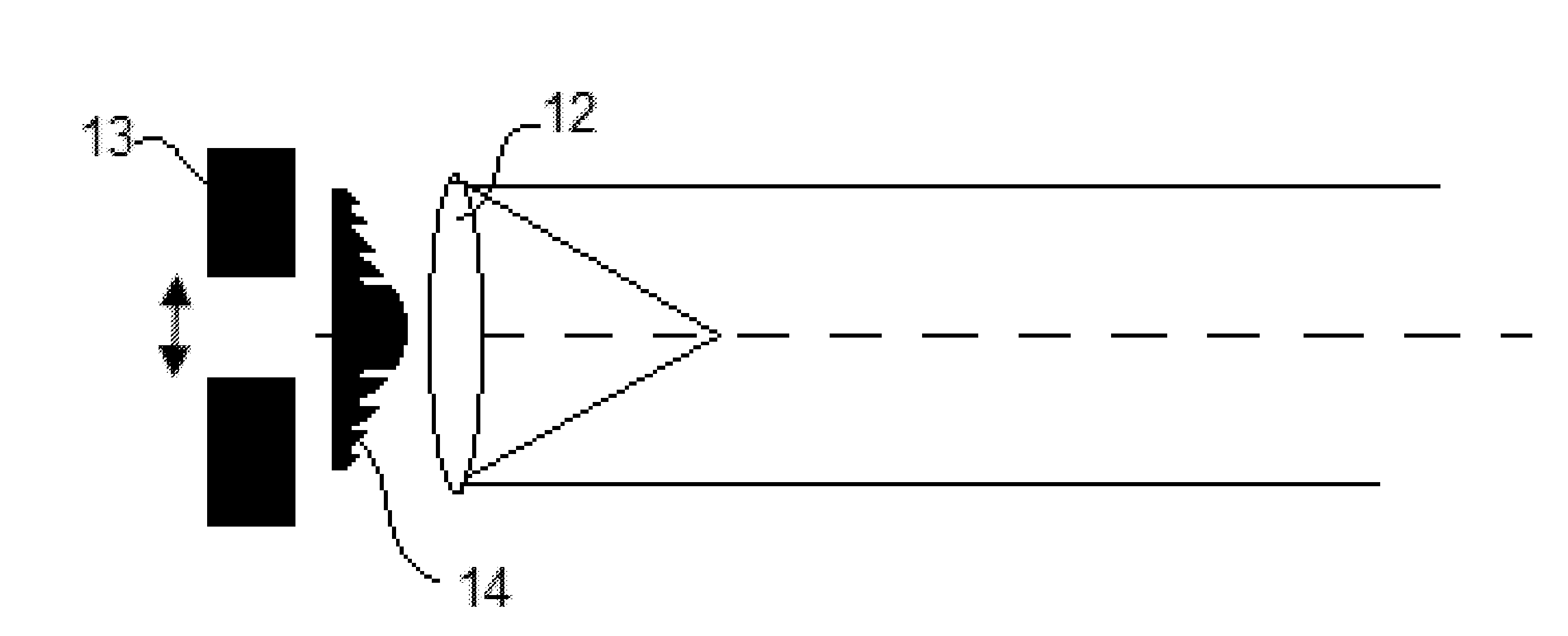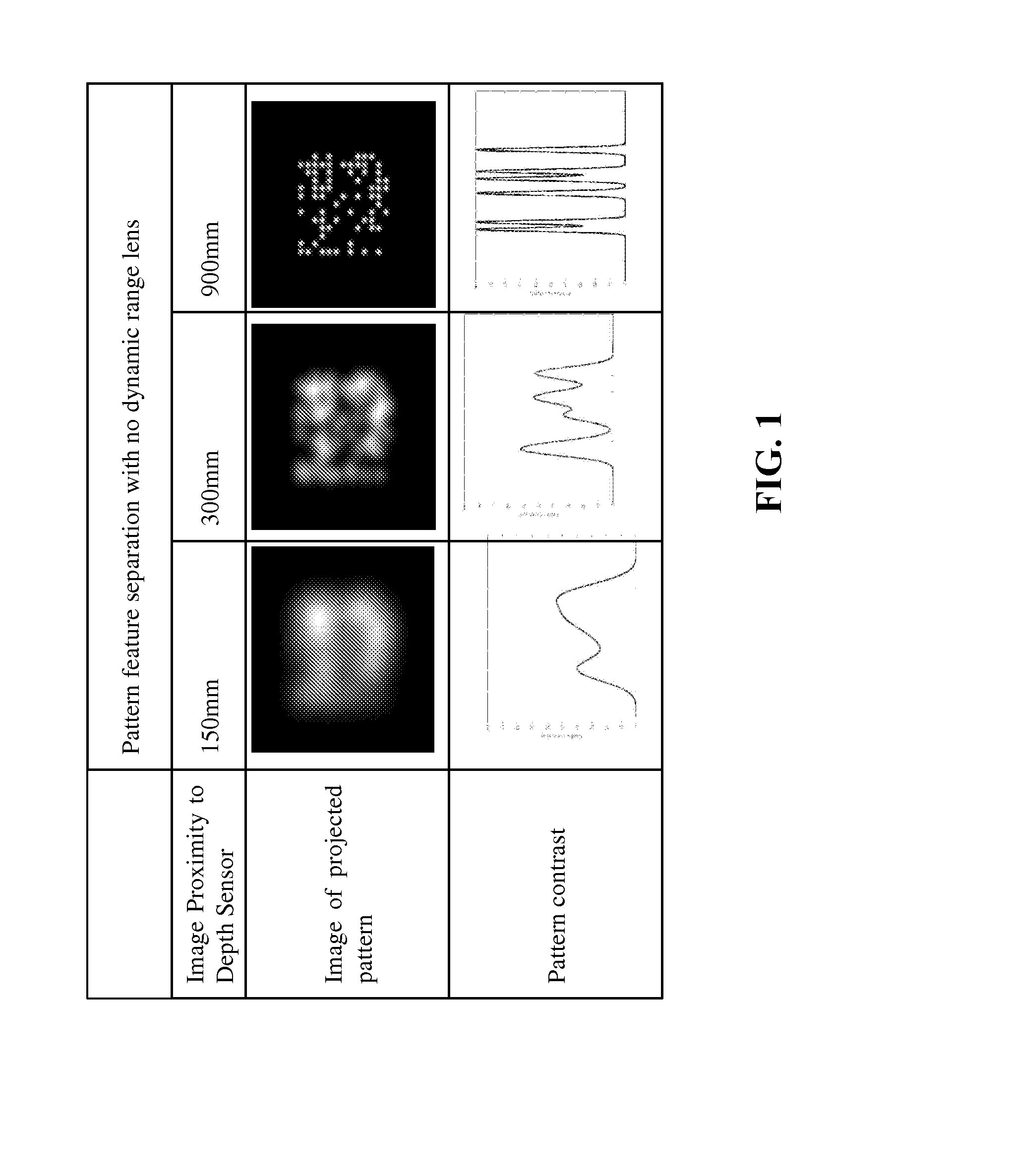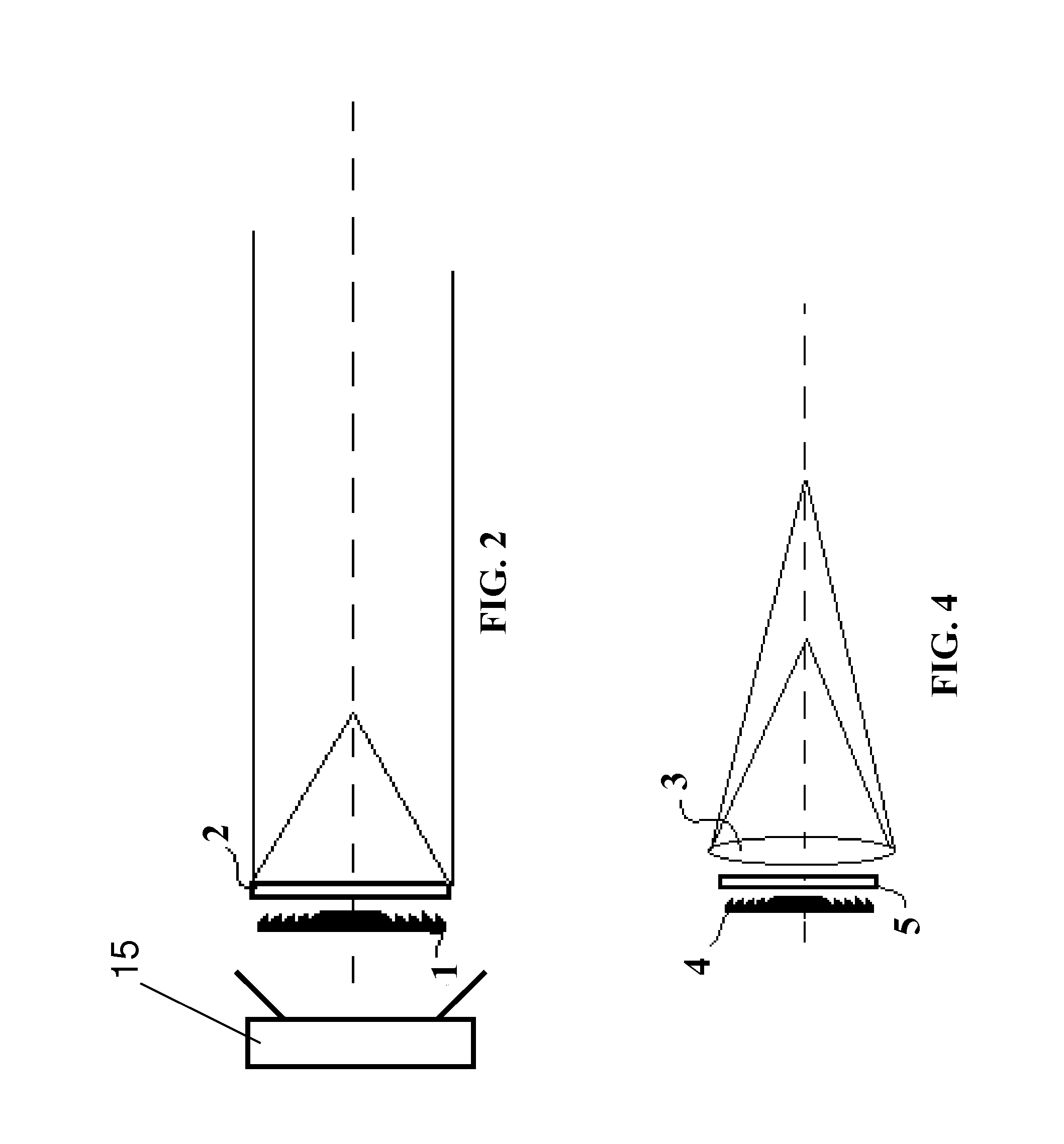Controllable optical sensing
a controllable, optical sensor technology, applied in the direction of optical radiation measurement, instruments, using reradiation, etc., can solve the problems of increasing the complexity of design and price, the inability to obtain depth sensing on objects in close proximity to the depth sensor, and the inability to provide gesture recognition for controlling the computer
- Summary
- Abstract
- Description
- Claims
- Application Information
AI Technical Summary
Benefits of technology
Problems solved by technology
Method used
Image
Examples
Embodiment Construction
[0053]The present invention, in some embodiments thereof, relates to an optical three-dimensional (3D) depth sensor and, more particularly, but not exclusively, to an optical 3D device for determining shapes and / or tracking the positions in three dimensional space of objects in view, and to a beam expander.
[0054]An embodiment is a depth imager device with extended dynamic range of its effective optical sensing, and comprises an image sensor, a light emitter projecting structured light at a predefined number of focal points and a processor able to process the resulting light patterns. Multi-focused structured light is projected into a view which includes an object of interest. The depth of the object is sensed by a structured illumination depth sensor which analyses the detected light structures that are in focus at the actual distance range of the object, the remaining light structures being out of focus.
[0055]Structured light may include a light pattern created by a laser or LED co...
PUM
| Property | Measurement | Unit |
|---|---|---|
| distance | aaaaa | aaaaa |
| distance | aaaaa | aaaaa |
| distance | aaaaa | aaaaa |
Abstract
Description
Claims
Application Information
 Login to View More
Login to View More - R&D
- Intellectual Property
- Life Sciences
- Materials
- Tech Scout
- Unparalleled Data Quality
- Higher Quality Content
- 60% Fewer Hallucinations
Browse by: Latest US Patents, China's latest patents, Technical Efficacy Thesaurus, Application Domain, Technology Topic, Popular Technical Reports.
© 2025 PatSnap. All rights reserved.Legal|Privacy policy|Modern Slavery Act Transparency Statement|Sitemap|About US| Contact US: help@patsnap.com



